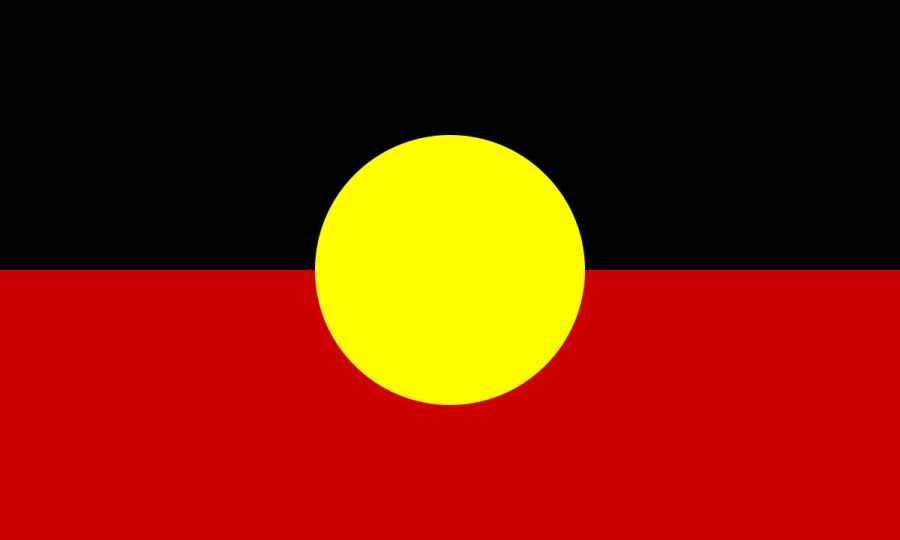Reviewed by Ian S. McIntosh
Arnhem Land Aboriginal (Yolngu) narratives regarding the female Dreaming entity Bayini and her husband Birrinydji have puzzled anthropologists and historians since the first sketchy recordings of ceremonies for Allah, anchors and flags, etc., were made by visiting scholars in the 1920s. Inspired by the presence of Indonesians from Macassar (who fished the coastal waters and traded with Aborigines from 1600 to 1907), the enduring significance of Bayini’s songs and dances remained a mystery until the 1990s when the senior custodian of this law, Warramiri elder David Burrumarra, spoke openly about them for the first time. His revelations helped tie together the abundant though largely uninterpretable published ethnographic data.
Spirit of Anchor, a new film by anthropologist Barbara Glowczewski, is a valiant attempt to solve the mystery of the Bayini and ascertain the extent of Macassan influence on Aboriginal cosmology. Unfortunately, Glowczewski is unfamiliar with the most recent literature.
The film, shot at Bawaka in northeast Arnhem Land (the place of Bayini’s “anchor”), provides an opportunity for various storytellers from the Gumatj clan to provide detailed, if cryptic, commentaries on local understrandings of the Bayini legacy. Yolngu statements, body language, paintings, songs, and dances, accompanied by the didjeridu, set a compelling scene. The Aboriginal performances are thought-provoking and moving. The film gives valuable insight into Yolngu systems of knowledge. But the narration is disappointing and does an injustice to the subject matter; it does not adequately draw upon or advance available scholarship.
As scholars have noted, the story of the Bayini is intimately linked to the presence of Macassans, the role of Aboriginal women as agents of trade in particular. In return for sexual favors, Yolngu would receive highly valued goods such as tobacco, knives and axes. “Outside” or public narratives describe this transaction in ambiguous terms. It is a cause of shame and a threat to traditional values and the future of clans: The antisocial “dog woman” takes the items offered, but makes it clear that these belong still to the visitors, just as she also will always belong to the land. She could never be the property of Macassans.
“Inside” narratives reflect this same ideal of defiance, but go much further. They describe a world in which outsiders acknowledge the Aborigines as land owners and Aboriginal land as the source of non-Aboriginal wealth. These are the stories of Bayini, the Aboriginal woman with skin the color of gold, and her husband, Birrinydji, described by Burrumarra as a king, a blacksmith, a boat captain. Birrinydji is the land itself, the source of Macassans’ iron and gold. Birrinydji and Bayini are the Dreaming entities responsible for drawing all foreigners onto the coast by the strength of their marr, or desire to bring the Aborigines into a new world.
Birrinydji had many wives, many Bayini, one for each of the Yirritja moiety clans—the Gumatj, Wangurri, Lamamirri, Birrkili, and so on. Bayini contains within her all future generations of Yirritja Yolngu. She is the ancestor of the Murgin (Murrnginy) or “iron-age” peoples of northeast Arnhem Land. Bayini’s law is “Yolngu for Yolngu and Bayini for Bayini.” In other words, Macassans (and other non-Aborigines) and Yolngu do not mix. Birrinydji’s law describes the proper order of relationships between blacks and whites, while Bayini’s law, among other things, affirms traditional kinship patterns within and between the moieties.
This film is a celebration of the Gumatj Bayini inheritance but some judicious editing would improve it. As it stands, the narrator’s agenda takes precedence over that of the Gumatj, and the viewer is presented with factual and interpretive errors that undermine the film’s scholastic value. Despite these shortcomings, however, the strength of Yolngu voices in Spirit of Anchor makes this a film of considerable interest.
Ian S. McIntosh is director of Cultural Survival.

